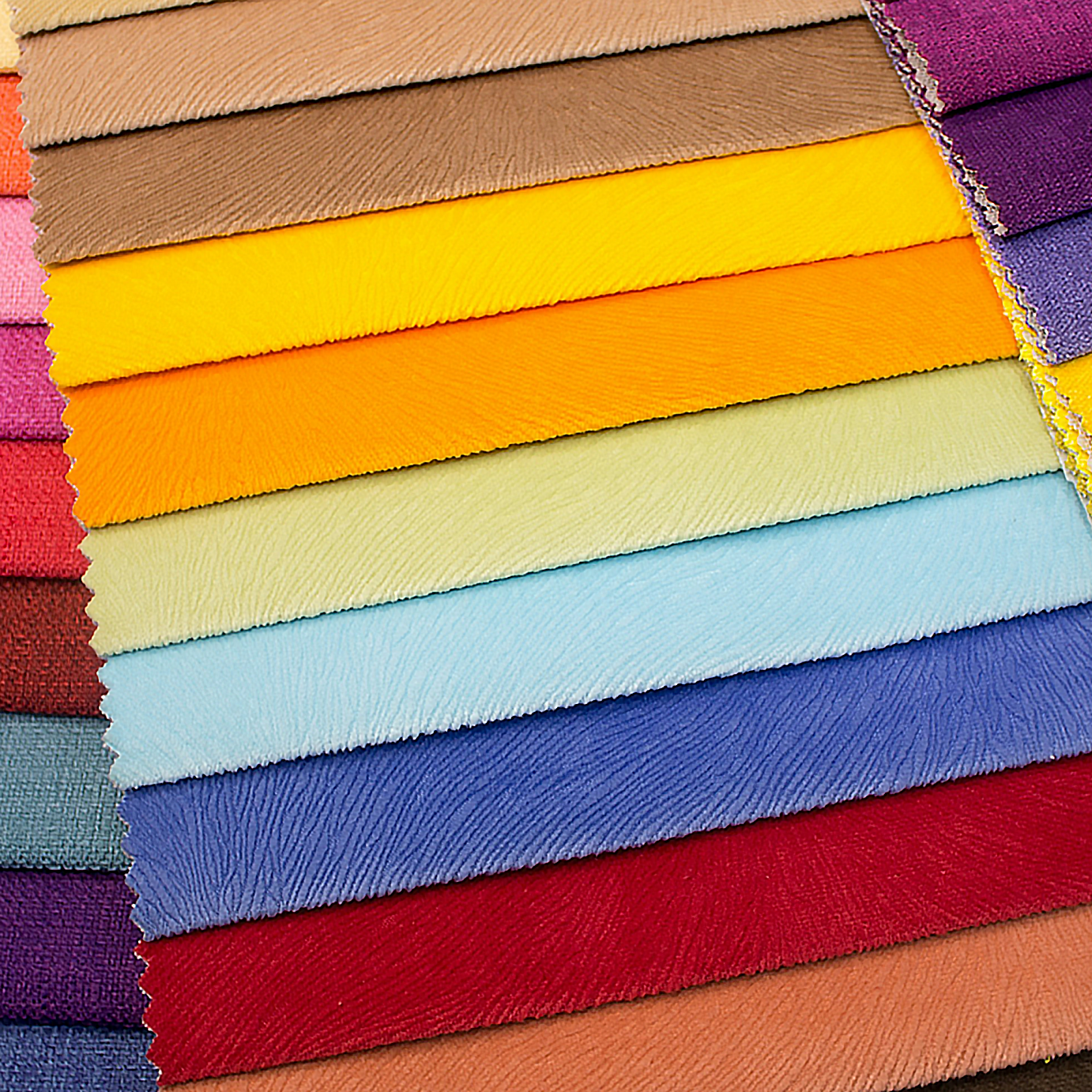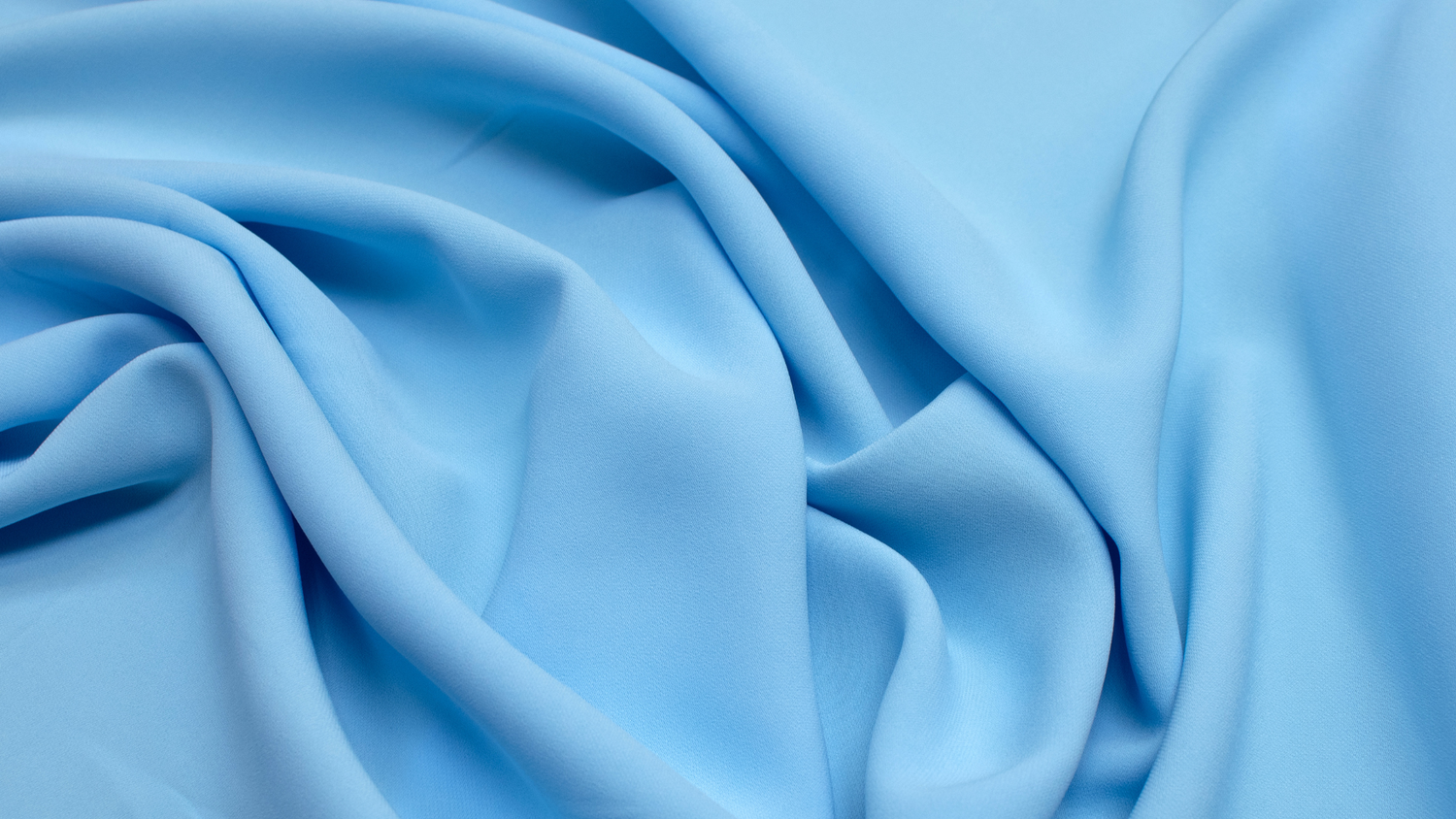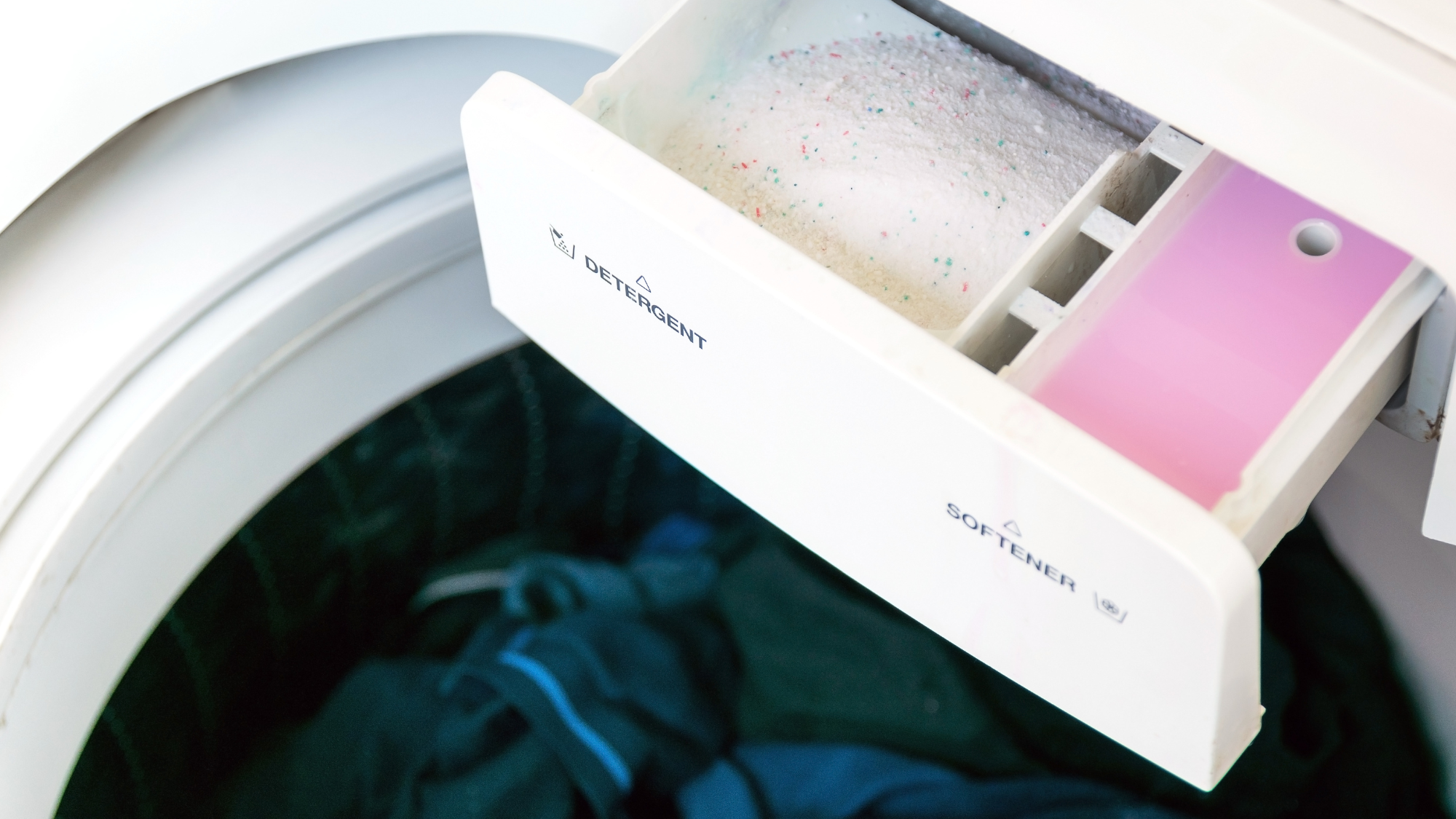
Rayon fabric is a popular choice for designers and home sewists alike, and it’s with good reason! Rayon is soft and versatile, and can be used for a variety of projects from evening looks to everyday wear. To learn more about the quality, uses and advantages of rayon fabric, check out our helpful guide below.
Shop rayon fabrics and more on our online store.
What is rayon fabric?
Rayon is a type of semi-synthetic fabric that is derived from cellulose, which is typically sourced from wood pulp or bamboo. It is often considered a "man-made" or "regenerated" fabric because it is produced by chemically treating and processing natural materials.
Rayon is known for its soft, smooth, and breathable qualities, which make it a popular choice for various clothing items. It has a similar appearance to silk and can be woven or knitted into different textures, including satin, chiffon, jersey, and twill. Rayon fabrics can drape well, have a good color retention ability, and can be easily dyed in various shades.
What types of rayon are there?
There are different types of rayon, including viscose rayon, modal rayon, and lyocell, each with slight variations in their manufacturing processes and properties. Viscose rayon is the most common and widely used type of rayon. Modal rayon is known for its enhanced softness and resistance to shrinkage, while lyocell is considered more environmentally friendly due to its closed-loop production process.
Is rayon a good quality fabric?
While rayon has many desirable qualities, it is important to note that it is not as durable as some other fabrics and may require special care during washing and handling. It can shrink, lose strength when wet, and may wrinkle easily. Following the garment's care instructions is crucial to maintaining the fabric's integrity.
Is rayon breathable?
Rayon fabric is generally considered to be breathable. It has good moisture absorption and evaporation properties, allowing air to pass through the fabric and promoting airflow. This can help regulate body temperature and keep you comfortable in various weather conditions.
Because rayon is made from a natural fiber, it retains some of the inherent breathability of the source material. The fabric has an open structure that allows for air circulation, which contributes to its breathability.
However, it's important to note that the breathability of rayon can vary depending on the specific weave, thickness, and finish of the fabric. Certain types of rayon, such as those with a tight weave or heavy finishes, may be less breathable compared to others. Additionally, the breathability of the fabric can be influenced by factors like humidity and layering with other garments.
Is rayon fabric stretchy?
Rayon fabric typically has limited natural stretch. It does not possess the same inherent stretchiness as fabrics like spandex or elastane. However, some types of rayon, such as those blended with spandex or other stretch fibers, can have added stretch properties.
The stretchiness of rayon fabric depends on factors such as the fabric construction, the specific type of rayon (e.g., viscose, modal, lyocell), and any additional stretch fibers incorporated into the fabric blend.
Pure rayon fabrics tend to have a relatively drapey and fluid quality but limited stretch. They may have a slight amount of give due to the looseness of the weave or knit, but it is generally not significant.
Does rayon fabric shrink?
Yes, rayon fabric has the potential to shrink when exposed to certain conditions, such as heat and agitation during washing or drying. Rayon is a semi-synthetic fabric, and its shrinkage can be influenced by its composition, weave, and specific care instructions.
To minimize the risk of shrinkage, it's important to follow the manufacturer's care instructions provided on the garment or fabric label. Here are some general tips to help prevent shrinkage of rayon fabric:
- Washing: Handwashing or using the delicate cycle on your washing machine with cold water is generally recommended for rayon. Avoid using hot water, as it can cause the fabric to shrink. Additionally, gentle or mild detergents are preferable over harsh or alkaline ones.
- Drying: Air drying is often the safest method to avoid shrinkage. Lay the rayon garment flat or hang it up to dry naturally. If you choose to use a dryer, use a low heat setting or a delicate cycle. Avoid high heat settings, as they can cause the fabric to shrink.
- Pre-treatment: If you have concerns about shrinkage, you can pre-treat the fabric by dampening it and gently stretching it back to its original shape before allowing it to dry.
- Professional cleaning: Dry cleaning can be a suitable option for rayon garments, as it minimizes the risk of shrinkage. However, always check the care label to ensure that dry cleaning is recommended for the specific rayon fabric.
Overall, to minimize the risk of shrinkage, it's crucial to handle and care for rayon fabric gently, using appropriate temperatures and methods as recommended by the manufacturer.
Does rayon fabric wrinkle?
Rayon fabric is prone to wrinkling, and it can crease easily, especially when it is not properly cared for. Factors such as the specific type of rayon, the weave, and the finishing processes can also affect the fabric's tendency to wrinkle.
Here are some tips to help minimize wrinkling in rayon fabric:
- Proper washing: Follow the care instructions provided by the manufacturer for washing and drying rayon garments. Handwashing or using the delicate cycle with cold water is generally recommended. Avoid using hot water, as it can contribute to wrinkling.
- Gentle drying: Air drying is often the best way to prevent excessive wrinkling. Lay the rayon garment flat or hang it up to dry naturally. If you choose to use a dryer, select a low heat setting or a delicate cycle.
- Prompt removal from the dryer: If you decide to use a dryer, promptly remove the rayon garment as soon as the cycle is complete to prevent wrinkles from setting in.
- Ironing with care: When ironing rayon fabric, use a low to medium heat setting and steam if possible. Iron the fabric while it is slightly damp or use a pressing cloth to protect the fabric from direct heat. Avoid pressing too hard or leaving the iron in one spot for too long to prevent scorching.
- Hanging or folding properly: After washing or ironing, hang rayon garments on hangers to help smooth out any remaining wrinkles. Alternatively, fold them carefully to minimize creasing.
Is rayon a sustainable fabric?
The sustainability of rayon as a fabric can vary depending on the specific type of rayon and the manufacturing processes involved. Here are some considerations regarding the sustainability of rayon:
- Sourcing of Raw Materials: The sustainability of rayon depends on the source of the cellulose used to produce it. Rayon can be made from wood pulp, which raises concerns about deforestation and the impact on ecosystems. However, there are efforts to source cellulose from sustainably managed forests or from alternative sources like bamboo, which is a fast-growing and renewable plant.
- Chemical Processing: The manufacturing process of rayon involves chemical treatments to convert cellulose into fibers. Traditional viscose rayon production has been associated with environmental issues due to the use of harsh chemicals and inadequate waste management. However, newer technologies like lyocell (Tencel®) and modal rayon have more environmentally friendly closed-loop production processes that recycle and reuse the chemicals, reducing waste and pollution.
- Water and Energy Consumption: The production of rayon, particularly traditional viscose rayon, can be water and energy-intensive. However, some newer processes, like lyocell, require less water and energy, making them more sustainable options.
- Biodegradability: Rayon is generally biodegradable, meaning it can break down naturally over time. This attribute can contribute to its sustainability, as it reduces the environmental impact when disposed of properly.
- Certifications and Standards: Look for certifications such as the Forest Stewardship Council (FSC) certification for responsibly sourced wood pulp or the Global Organic Textile Standard (GOTS) for organic rayon. These certifications provide assurance that certain environmental and social criteria are met throughout the supply chain.
- It's important to note that while rayon can have sustainability benefits, it is not inherently sustainable. The sustainability of the fabric depends on factors such as the raw material sourcing, production processes, and the responsible management of waste and resources by manufacturers.
- When considering the sustainability of rayon or any other fabric, it's advisable to look for transparency, certifications, and information about the specific manufacturing practices used. Opting for more sustainable alternatives like organic cotton, hemp, or linen may also be worth considering.
Where can I buy rayon fabric by the yard?
At Zelouf Fabrics, we offer a wide variety of rayon and rayon blend fabrics to suit your needs. To purchase by the yard, just visit our online store at Zelouffabrics.com, or call our customer service with any questions at (212) 221-3131.
Overall, rayon is a versatile fabric that blends the comfort of natural fibers with the benefits of man-made materials, making it a popular choice for a wide range of clothing and textile applications. For a breathable fabric that’s as comfortable as it is beautiful, you can’t go wrong with rayon.




